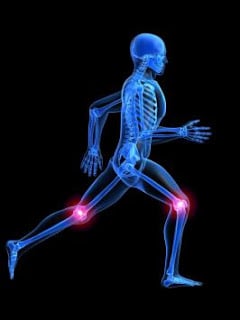
Over 30% of athletes complain of knee pain. NBA players have made it common practice to have procedures on this joint, ranging from cartilage “clean-ups” to injections of healing factors (i.e. PRP, etc.). Most recently, just one great year or even one performance pays out money and endorsements what previously took years to accumulate. As a result, modern movements seek speed and power with only the present in mind. While Derrick Rose leaps into a jump stop and Tiger Woods hits monstrous drives, athletes of old had to pace themselves for a career to accumulate similar endorsements and fame. Thankfully, recent research has confirmed this theory of maximal effort being the primary culprit of knee pain.
The July 2012 study came out of the University of Southern California, specifically the Biokinesiology and Physical Therapy department. The authors examined elite dancers because they are exposed to the effects of repetitive jumping and leaping similar to other athletes. These subjects had patellar tendinopathy, a more all-encompassing diagnosis than tendonitis. The reality is a true tendonitis (where inflammation of the tendon is the primary dysfunction) is a rare occurrence. “Tendinopathy” or “tendinosis” are now considered appropriate terms to describe the more common tendon dysfunction, which is degenerated and frayed. A treatment approach primarily geared toward reducing inflammation can then be expected to have little to no effect.
The dancers with patellar tendinopathy demonstrated 82% greater PEAK braking ground reaction force (GRF) and 126% greater impulse, the DRIVE of force production. The braking GRF is separate from vertical GRF, but generally refers to horizontal forces that help stabilize the athlete or allow them to change direction. Landing ANGLE explained the majority of this braking impulse, which makes sense because angle refers to the shin position relative to the ground.
We also know that one of the most proven tendinopathy treatments is eccentric exercise, which emphasize the slow lowering portion of a lift. These lengthening contractions increase muscle length, but more importantly affect your GRF movement signature. By emphasizing a prolonged impulse and force, rather than peaks, stress can be taken off the joint and dispersed across more of the soft tissue.
We have successfully identified knee pain, both silent and obvious, by a decreased LOAD of force production on our plates. After this analysis, we have taken only weeks to treat and cure lifelong knee pain in both NBA stars and high school All-Americans with this exercise below, the 1 leg box squat.
We start with a higher box, progressing downwards and add repetitions to increase the difficulty.
1.) Your knee pain likely involves tendinopathy, a degeneration of the soft tissue from overuse
2.) The cause is excessive peak GRF, rather than average forces
3.) The best prescription is eccentric exercise to build the degenerating structures back up, as well as improve your movement signature to prolong forces.
You can also ice your knee, as numbing the skin, is a great way to ignore your problem.
Fietzer AL, Chang YJ, Kulig K. Dancers with patellar tendinopathy exhibit higher vertical and braking ground reaction forces during landing. J Sports Sci. 2012 Jul;30(11):1157-63. Epub 2012 Jul 4.